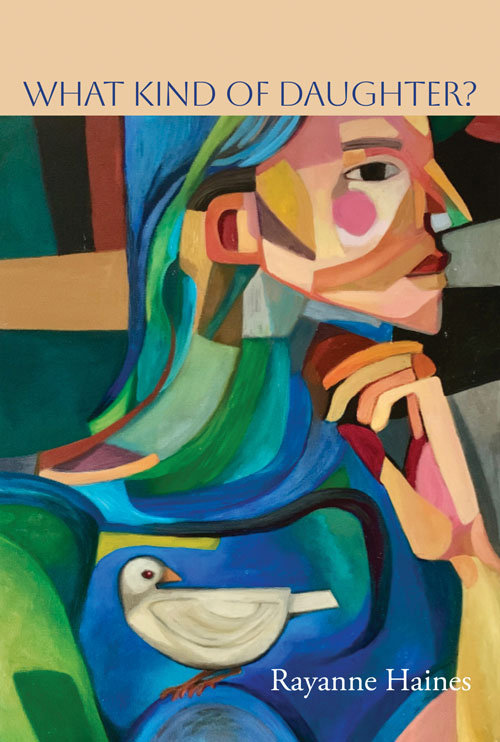Blending poetry and prose in any text is a tough endeavour. The reader who wants one genre often doesn’t yearn for the other, whether generally or temporally. In What Kind of Daughter? Rayanne Haines attempts this hybrid account of living in a traumatic time, including through her mother’s illness and death, using spare, lower-case lyrics (“being this woman/ is a back road and full/ moon and the howl everyone/ begs to hear” from “Faultlines”) and passages of direct, unyielding reportage, as in “Pink Blooms”: “For ten days, I watched my mother die. And now I’m writing about it. Sometimes, I think I am perverse, with this need to write about it.”
It’s refreshing to read unabashed assertions revolving around sexuality’s conflicts, problematic familial bonds and personal approaches to feminism. It’s hard to admit to these realities yet it’s even more necessary now, as women are being questioned again for speaking about their wombs and their own valid experiences of periods or menopause. And these are often brutal truths, such as those in the prose piece called “On Exploration and Not Being a Joyful Person”: “Our rights are not ours to hold. And we are moving backward, not forward. America has effectively criminalized abortion, even in cases of incest or rape.”
The book is structured in seven sections or steps (as if more active stages of grieving), headed by Yoko Ono-style abstract or surreal directives: “unfold the limbs that bore witness” or “ponder tasting a moonrise.” Each part offers up both lyrical and narrative-based modes of entrance to similar material. At one point, in “To Bear Witness,” Haines aims to summarize the book’s ineffable subject matter: “When people ask me what I’m writing about, how do I say ‘I’m trying to dissect grief?’ The grief of almost, the grief of what hasn’t happened yet, the unbearable and the bearable, the grief associated with all the different kinds of losses.” And grief is also threaded through nature’s challenging solaces, imaginings of what life would have been like if one were a more “liberated” notion of woman, and projections of upcoming grandmotherhood when Haines discovers her daughter-in-law is having triplets.
The pieces in either genre sometimes veer into maudlin or clichéd territory. But as the quest to contain mourning bends to an urge for premature closure: “Towards releasing. Towards saying goodbye” (“Letter to Carolyne”) or “the truth is, i am longing,/ still, for a mirror/ in which i see me” (“Self Diagnosis”), What Kind of Daughter? remains unafraid of self-interrogation and other-analysis in the need to embrace mortality.
Catherine Owen is the author of Moving to Delilah (2024).
____________________________________________


